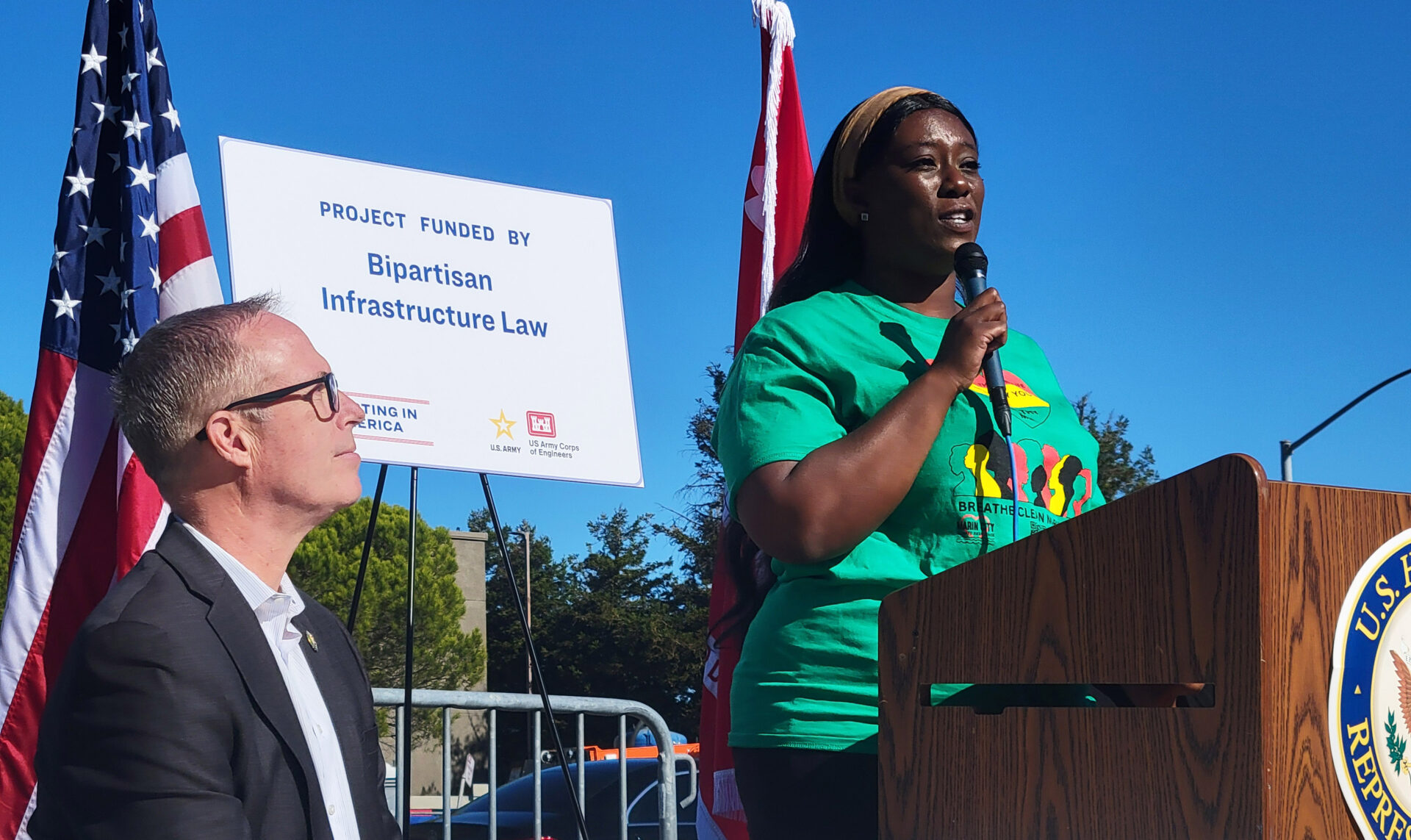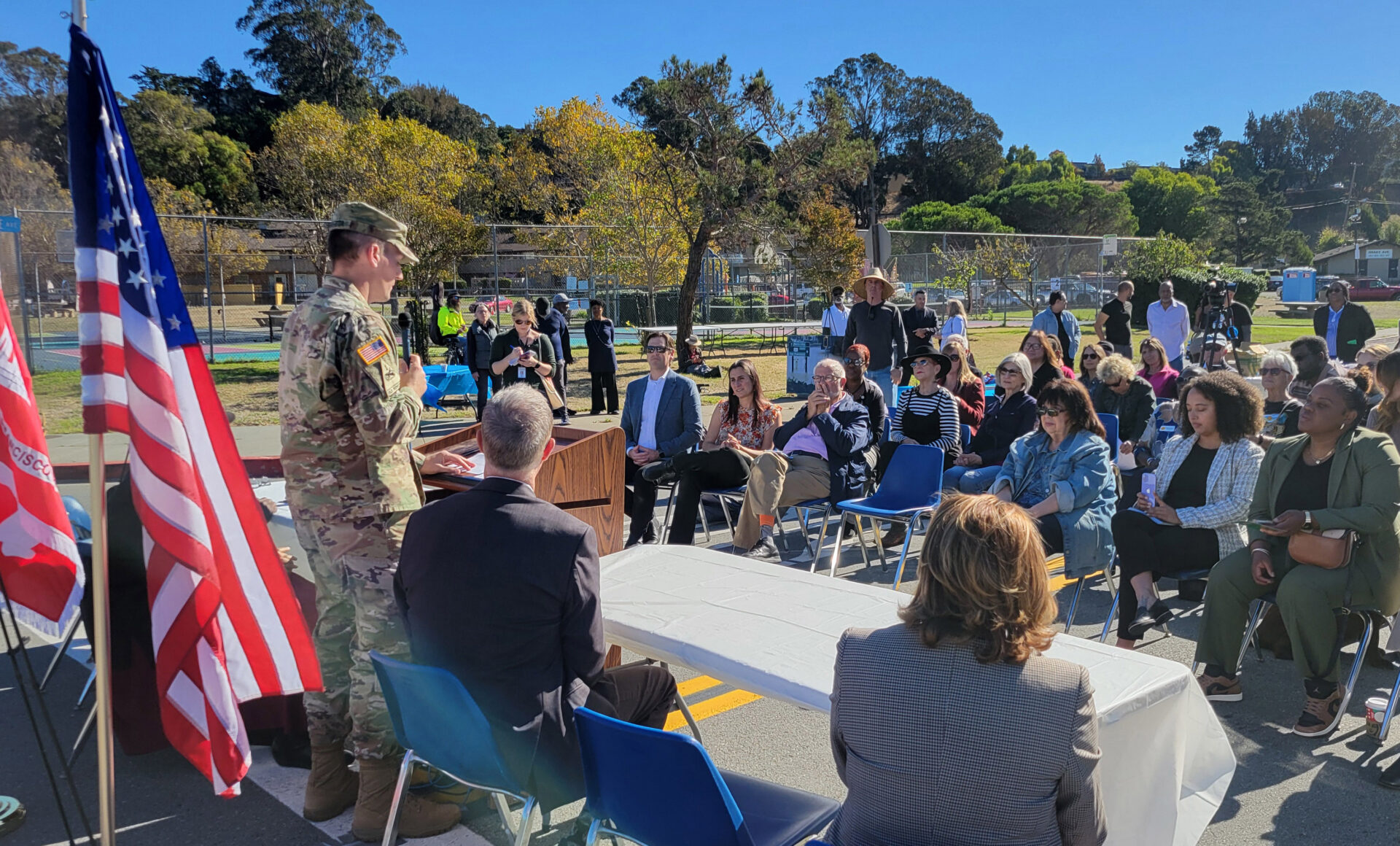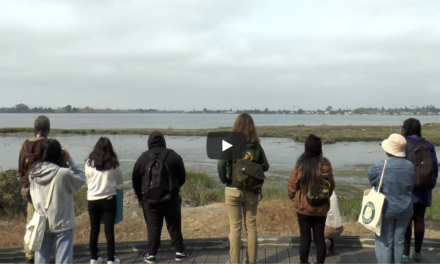Feds Shoulder Marin City’s 80-Year-Old Drainage Problem

Resident Chinaka Green and Congressman Jared Huffman at the press conference. Photo: Brandon Beach, USACE
In Marin City, floodwaters have been a chronic reminder of the community’s long-standing neglect — but a federal project could finally break that cycle. Marin City was selected to be one of 12 communities across the country who will participate in a Congressional Pilot Program led by the U.S. Army Corps of Engineers, for which the federal government will cover 100% of the cost of a flood-reduction project in Marin, up to $13.5 million.
At a kick-off event on November 7 at the corner of Donahue and Drake, residents and activists shared their experiences with 80 years of constant flooding.
Donald Smith has lived in Marin City for 76 years. “There used to be a barber shop right over there named ‘Clarence,’” he said. “You had to have a weather map to go get a haircut because you don’t know if it’s going to be flooded out or not.”
Chinaka Green, associate director of Marin City Climate Resilience, described having to park in Sausalito and walk home after the Marin City exit flooded. “My son and I were pretty tall, and the water was to our knees,” she said. She walked alongside other families, who had to carry their small children on their shoulders. “We do deserve better here in Marin City. We don’t deserve to continue to have to walk through contaminated flood waters.”

Timothy Shebesta, Commander of the USACE San Francisco District, speaks to the community. Photo: Brandon Beach, USACE
In the background, a construction crew installed a temporary drainage system on Donahue St. to relieve flooding in the short-term; the Army Corps project will develop a more permanent solution.
Congressman Jared Huffman described the program as a “shining star of good news.” “Can everyone hear me over the construction noise?” he laughed. “We want to hear more construction noise in this community.”
He recognized that the primarily Black community, founded during World War II as workers migrated from the South and Midwest to build ships in Sausalito, has been long neglected. “The community qualifies for reparations and should be given high priority due to the historic institutional racism that residents have suffered for generations,” he said.
Funding for the pilot comes from the Bipartisan Infrastructure Law passed by Congress in 2021, and authorized under Section 165(a) of the Water Resources Development Act of 2020. This new authorization allows the Corps to pursue small civil works projects and to pay 100% of the cost, rather than requiring local cost sharing.
Next, the Army Corps will coordinate with the Marin Community Services District on a project management plan and partnering agreement before officially kicking off work on a feasibility study in 2025. According to the Corps, the planning team will then explore a suite of alternative solutions to the city’s flooding issues with community input driving the process.
Other Recent Posts
Boxes of Mud Could Tell a Hopeful Sediment Story
Scientists are testing whether dredged sediment placed in nearby shallows can help our wetlands keep pace with rising seas. Tiny tracers may reveal the answer.
“I Invite Everyone To Be a Scientist”
Plant tissue culture can help endangered species adapt to climate change. Amateur plant biologist Jasmine Neal’s community lab could make this tech more accessible.
How To Explain Extreme Weather Without the Fear Factor
Fear-based messaging about extreme weather can backfire. Here are some simple metaphors to explain climate change.
Live Near a Tiny Library? Join Our Citizen Marketing Campaign
KneeDeep asks readers to place paper zines in tiny street libraries to help us reach new folks.
Join KneeDeep Times for Lightning Talks with 8 Local Reporters at SF Climate Week
Lightning Talks with 8 Reporters for SF Climate Week
ReaderBoard
Once a month we share reader announcements: jobs, events, reports, and more.
Staying Wise About Fire – 5 Years Post-CZU
As insurance companies pull out and wildfire seasons intensify, Santa Cruz County residents navigate the complexities of staying fire-ready.









